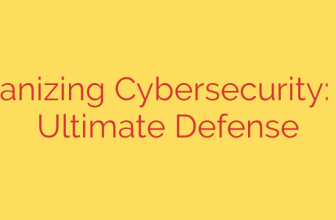
The $2 Billion Threat: How North Korean Hackers Are Targeting Your Crypto
A staggering $2 billion in digital assets has been stolen by North Korean state-sponsored hackers in just the past year, marking a dramatic escalation in state-sponsored cybercrime. This isn’t the work of isolated individuals; it’s a coordinated, sophisticated campaign designed to funnel vast sums of money into the sanctioned nation’s coffers. As the crypto market evolves, these threat actors have adapted, turning decentralized finance (DeFi) platforms and individual investors into their primary targets.
Understanding this threat is the first step toward protecting your investments. These are not random attacks but calculated operations with clear objectives and increasingly refined methods.
The Perpetrators: Beyond a Typical Hacking Group
At the forefront of these digital heists are elite cyber warfare units, most notably the Lazarus Group and Kimsuky. These groups operate as extensions of the North Korean state, with their primary mission being to generate illicit revenue to fund the regime and its weapons programs, thereby circumventing strict international sanctions.
What sets these groups apart is their patience, resources, and multifaceted approach. They combine traditional hacking techniques with complex social engineering and targeted malware, allowing them to breach even well-defended crypto exchanges and platforms.
The Playbook: How the Thefts Are Executed
The hackers employ a diverse range of tactics to steal digital funds. Their methods are constantly evolving, but several key strategies have proven highly effective:
- Exploiting DeFi Vulnerabilities: Decentralized finance platforms, especially cross-chain bridges, have become a favorite target. Hackers meticulously search for and exploit coding flaws in smart contracts to drain liquidity pools, often making off with hundreds of millions of dollars in a single attack.
- Sophisticated Phishing and Social Engineering: This is a cornerstone of their operations. Hackers create fake job offers on platforms like LinkedIn, posing as recruiters to target employees at cryptocurrency firms. Once contact is made, they deliver malware-laden documents that compromise the entire corporate network.
- Malware and Malicious Applications: The groups create and distribute Trojanized crypto applications and wallet software. Once installed, these programs steal private keys and credentials, giving the hackers direct access to a user’s funds. Over one-third of this year’s stolen funds came from these types of attacks alone.
- Supply Chain Attacks: By compromising a single software provider or update, the hackers can infect thousands of downstream users simultaneously. This method allows them to scale their operations with devastating efficiency.
How to Protect Your Digital Assets from State-Sponsored Threats
While the scale of these attacks is alarming, individuals and institutions can take concrete steps to fortify their defenses. A proactive security posture is essential in today’s digital landscape.
- Use Hardware Wallets (Cold Storage): Never leave the majority of your cryptocurrency on an exchange or in a “hot” wallet connected to the internet. Transfer your assets to a hardware wallet like a Ledger or Trezor. This keeps your private keys offline and out of reach of remote hackers.
- Enable Multi-Factor Authentication (MFA): Activate the strongest form of MFA available on all your exchange and email accounts. Prioritize non-SMS options like authenticator apps (Google Authenticator, Authy) or physical security keys (YubiKey).
- Scrutinize All Communications: Be extremely wary of unsolicited emails, direct messages, and job offers, especially those that ask you to download a file or click a link. Verify the sender’s identity through a separate, official channel before taking any action.
- Vet DeFi Platforms Rigorously: Before investing in a DeFi protocol, research its security history. Look for professional security audits from reputable firms and check for any known vulnerabilities. Platforms with a strong track record and transparent security practices are a safer bet.
- Keep Software Updated: Ensure your computer’s operating system, browser, and antivirus software are always up to date. These updates often contain critical security patches that protect you from the latest malware threats.
The rise in state-sponsored crypto theft is a serious challenge for the entire digital asset ecosystem. This isn’t random cybercrime; it’s a calculated, state-level operation designed for maximum financial impact. By understanding the tactics used by these sophisticated actors and adopting a security-first mindset, investors can build a formidable defense to protect their hard-earned assets.
Source: https://www.helpnetsecurity.com/2025/10/08/north-korean-hackers-cryptocurrency-theft/







